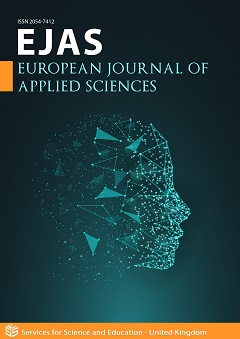Rate of Positive Culture Isolates and Pathogen Spectrum in Children with Suspected Meningitis: Findings from a Tertiary Facility in South-Eastern Nigeria
DOI:
https://doi.org/10.14738/aivp.116.15728Keywords:
Positive, isolates, pathogens, culture, rates, tertiary, facility, Pediatric Meningitis, South-Eastern NigeriaAbstract
Acute bacterial meningitis (ABM) continues to pose significant concern for caregivers and healthcare workers, particularly in resource-limited facilities within developing countries due to its potential for rapid progression and severe outcomes. This study aimed to investigate the rate of positive culture isolates, spectrum of pathogens, common presenting features, and treatment outcomes of children with suspected ABM, confirmed through cerebrospinal fluid (CSF) analysis, at a tertiary facility in South-Eastern Nigeria. Methodology: This prospective review involved 105 post-neonatal children presenting with suspected ABM, who were attended to at the Children Emergency Room of the Federal Medical Centre Umuahia from January 2016 to December 2020. Enrolled subjects, displaying clinical features suggestive of ABM, were monitored during their admission and followed up for at least 6 months after discharge. A proforma was used to collect data on clinical features, laboratory findings, treatment, and outcomes. The data were analyzed using SPSS version 23, applying descriptive statistics to estimate the prevalence and pattern of bacterial isolates. Bivariate logistic regression analysis was used to determine the relationship between demographic characteristics and treatment outcomes. Results: Out of the 105 CSF samples obtained, 74 (70.5%) yielded an isolate. Streptococcus pneumoniae accounted for the majority of isolates, with 31 (29.5%) cases. Other isolated pathogens included Staphylococcus aureus 13 (12.4%), Enterobacter spp 10 (9.6%), Listeria monocytogenes 9 (8.6%), Streptococcus agalactiae 5 (4.8%), Haemophilus influenzae b 2 (1.9%), Escherichia coli 1 (1.4%), and Salmonella typhi 1 (1.4%). The most common presenting features were fever in 94 of the 105 subjects (89.5%), convulsion in 82 (78.1%), and altered consciousness in 26 (24.8%). A majority of the participants were fully immunized (74.3%), and most CSF samples obtained appeared turbid (84.8%). Only 4 (3.8%) of the participants experienced adverse neurological sequelae. Conclusion: Fever, convulsion, vomiting, and altered consciousness were common presenting features in children with suspected ABM. Streptococcus pneumoniae, Staphylococcus aureus, Enterobacter spp, and Listeria monocytogenes were the predominant isolates in subjects with clinical suspicion of ABM. Although routine immunization programs have helped reduce the incidence of H. influenzae b meningitis in children, the rate of Streptococcal pneumonia meningitis remains unacceptably high. Enhanced immunization coverage and prompt, simultaneous use of corticosteroids and antimicrobials may aid in limiting morbidity and mortality.
Downloads
Published
How to Cite
Issue
Section
License
Copyright (c) 2023 Izuka Oluchi Mildred, Nwala Gabriel Chuks, Chidomere Roseann Ifeyinwa, Ogbonna Ikechukwu Frank, Ugolee Jerry Chinedu, Okafor Amarachukwu Faith, Kalu Eziyi Iche, Ukpabi Ihuoma Kathleen

This work is licensed under a Creative Commons Attribution 4.0 International License.






